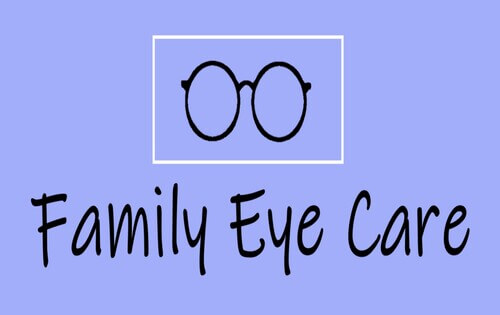Andalusia Pediatrics Clinics: Dedicated Look After Your Child's Health
The Pros and Cons of Different Refractive Surgeries for Enhanced Eyecare

LASIK Surgery
LASIK surgical procedure is a typically performed refractive treatment that intends to deal with vision issues such as astigmatism, farsightedness, and nearsightedness. This surgical method has gained popularity due to its effectiveness in providing patients with clearer vision and minimizing their dependency on glasses or call lenses. Throughout the procedure, a slim flap is created on the cornea, and a laser is utilized to improve the underlying cells, fixing the refractive error. The flap is after that repositioned, enabling for quick recovery and minimal pain for the patient.
One of the primary benefits of LASIK surgical treatment is the rapid improvement in vision experienced by numerous clients. A lot of people observe a substantial improvement in their sight quickly after the procedure, with very little downtime required for recovery. In addition, LASIK is recognized for its high success price and reduced occurrence of issues when done by knowledgeable doctors. Nonetheless, like any surgical procedure, LASIK likewise brings some dangers, including dry eyes, glow, halos, and under or overcorrection of vision. It is vital for people considering LASIK surgical treatment to undertake a detailed evaluation by an eye treatment specialist to determine if they appropriate candidates for the procedure.
PRK Procedure
The PRK procedure, likewise understood as Photorefractive Keratectomy, is a kind of refractive surgical procedure that intends to correct vision concerns comparable to LASIK surgery. Unlike LASIK, which includes producing a flap in the cornea, PRK works on the surface area layer of the cornea.
One of the advantages of PRK over LASIK is that it removes the risk of flap-related difficulties because no flap is produced during the surgical treatment. Regardless of the longer recuperation period, PRK can be an appropriate choice for individuals looking for vision adjustment surgery.
SMILE Surgery
An innovative refractive surgical treatment method acquiring popularity in the field of ophthalmology is SMILE Surgery. Tiny Laceration Lenticule Removal (SMILE) is a minimally intrusive treatment that remedies vision by improving the cornea using a femtosecond laser. Unlike typical LASIK surgery, SMILE Surgery includes developing a little laceration in the cornea to extract a lenticule, which leads to less disruption to the corneal framework and possibly faster recovery times.
One of the key advantages of SMILE Surgical procedure is its capability to treat nearsightedness (nearsightedness) and astigmatism with high precision, bring about exceptional visual outcomes for individuals. The minimally intrusive nature of the procedure also lowers the danger of problems such as completely dry eye disorder, making it a positive alternative for individuals seeking refractive surgical treatment.

LASEK Strategy
Having discovered the benefits and factors to consider of SMILE Surgical treatment, an additional notable refractive surgical procedure technique worth analyzing is the LASEK Strategy. LASEK, which stands for Laser-Assisted Subepithelial Keratectomy, is a kind of laser eye surgical treatment that aims to fix refractive mistakes such as myopia (nearsightedness), hyperopia (farsightedness), and astigmatism.
Unlike LASIK, LASEK does not entail creating a corneal flap. Rather, throughout a LASEK procedure, the surgeon utilizes a watered down alcohol option to loosen the thin outer layer of the cornea, referred to as the epithelium. This layer is then delicately relocated apart to allow the laser to reshape the underlying corneal tissue. Once the cornea has been reshaped to the preferred level, the epithelial layer is repositioned.
One of the primary benefits of LASEK is that it can be appropriate for individuals with slim corneas that may not be excellent prospects for LASIK. Furthermore, LASEK normally leads to minimal post-operative pain and a quicker healing time compared to PRK. However, the aesthetic recovery procedure with LASEK might be a little longer than with LASIK.
Implantable Get In Touch With Lenses
Implantable Get in touch with Lenses use a lasting vision correction remedy for people seeking an option to standard get in touch with lenses or glasses. These lenses, also referred to as phakic intraocular lenses, are surgically placed into the eye to fix refractive errors such as myopia (nearsightedness), hyperopia (farsightedness), and astigmatism. andalusia go to this website pediatrics. Unlike standard contact lenses that remain on the surface area of the eye, implantable call lenses function within the eye itself, supplying clear vision without the need for daily maintenance or removal
One of the vital advantages of implantable call lenses is their permanence. As soon as inserted, they can remain in the eye forever, supplying regular and stable vision modification. In addition, these lenses can be an exceptional option for individuals that are bad candidates for laser eye surgical procedure or who prefer a reversible vision modification treatment.
Nonetheless, implantable call lenses do lug some risks, including the capacity for cataracts or boosted eye stress. It is essential for individuals considering this choice to speak with an eye treatment professional to figure out if implantable contact lenses are the right choice for their particular demands and eye health.
Conclusion
In conclusion, each kind of refractive surgical treatment has its own benefits and downsides. LASIK surgical treatment is popular for its fast recovery time, while PRK treatment may be suitable for people additional hints with thin corneas.

In General, SMILE Surgery offers an appealing option for people looking to boost their vision through refractive surgery.